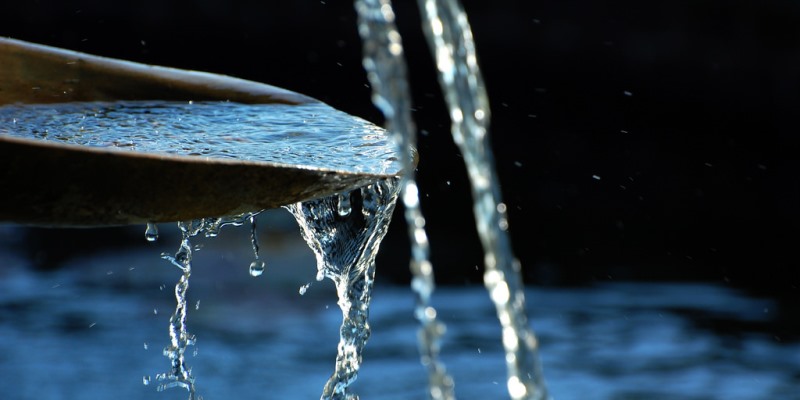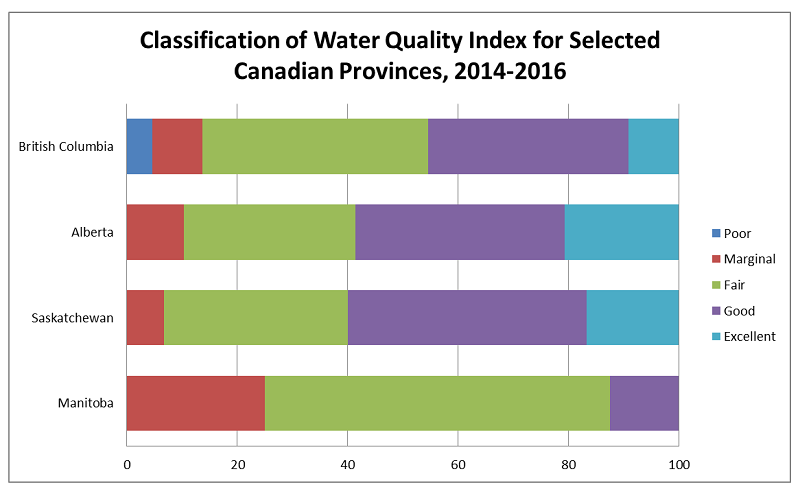Freshwater quality in Western Canada

It’s hard to imagine a resource more important than clean water. And according to a recent study, the quality of Canada’s freshwater is generally quite good. However, the study notes that results vary by region. To understand how water quality differs across the country, this post examines provincial water quality in Western Canada.
The provincial data in the chart below is provided by the Environment Canada Water Quality Index (WQI), which was created to help summarize complex water data and facilitate its dissemination to the general public.
The index measures a number of parameters (e.g. pH, SO4, NO3) in water and compares the parameters to water quality guidelines defined by the province or the federal government. Water quality guidelines are thresholds indicating when a parameter becomes harmful to animals and plants. The WQI accounts for the number of parameters that do not meet guidelines, the frequency of this occurrence, and by how much the parameters deviated from the guideline. Next, based on the overall suitability to support aquatic life, the index ranks waterbodies as excellent, good, fair, marginal, or poor.
Excellent means water quality is protected, with an absence of any threat or impairment. Good means there are only minor threats or impairments to water quality. Fair means water quality is usually protected but is occasionally threatened or impaired. Marginal means water quality is frequently threatened or impaired. Poor means water quality is almost always threatened or impaired

The chart shows the Water Quality Index (WQI) results for Western Canada for the 2014-2016 period. As shown, out of four provinces, British Columbia is the only one that has monitoring stations with poor water quality status.
Specifically, out of 22 stations in BC, five per cent were rated as poor (one site), nine per cent rated as marginal (two sites), 41 per cent (nine sites), rated as fair 36 per cent (eight sites) rated as good, and nine per cent (two sites) rated as excellent. The Salmon River is the only river classified as having poor water quality in British Columbia.
With respect to Alberta, Environment Canada examined 29 stations across the province using the WQI and rated 10 per cent as marginal, 31 per cent as fair, 38 per cent as good and 21 per cent as excellent. In other words, more than half of the stations in Alberta exhibited good or excellent water quality from 2014 to 2016.
In Saskatchewan, the WQI data suggests that out of 30 stations, seven per cent were classified as marginal, 33 per cent as fair, 43 per cent as good and 17 per cent as excellent. Again, more than half of the stations across the province exhibited good or excellent water quality.
Finally, Manitoba’s water quality ranges between marginal and good based on the WQI calculated by Environment Canada. Out of 24 stations, 25 per cent were classified as marginal, 63 per cent as fair and 13 per cent as good.
Overall, the state of water quality in Western Canada is quite positive as challenges remain largely localized.
Authors:
Subscribe to the Fraser Institute
Get the latest news from the Fraser Institute on the latest research studies, news and events.

